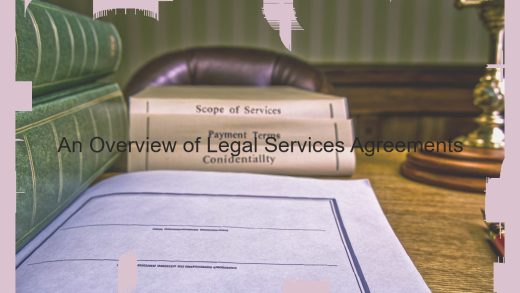License Plate Light Basics
License plate lights have a primary objective: to illuminate the numbers and letters on your vehicle’s license plates. This functionality is essential for several reasons. Cars and motorbikes travel at high speeds, particularly on highways, and it can be difficult to read a license plate at a distance. Without adequate lighting, particularly at night or in low-light conditions, these identifiers can be impossible to read.
Beyond practical applications, the need for these lights is often prescribed by law. Most states mandate that license plates of all vehicles must be visible from a distance of 50 to 100 feet, regardless of the lighting conditions. Relying purely on the natural glow of your headlights to illuminate the plate might not meet this requirement, which only serves to support the argument for the necessity of plate lights.
In addition to requirements regarding visibility , many states dictate the color of light required for these lamps. White bulbs are a common standard, although colored lighting is also permitted in certain areas. Within the United States, anything from red to yellow are available.
Light sources for license plate lamps can come in various forms, from incandescent to LED options, and are usually mounted to either the rear bumper or deck of the vehicle. However, more recently, some number plates are in illuminated form, using either LCD or LED technology. Regardless of form, the overarching goal is the same: to ensure maximum visibility of a vehicle’s state-issued identifying information.
Should you wish to make a choice above and beyond the requirement of local license plate light law, it is a good idea to check with the appropriate regulatory body before deciding on an alternative.
State vs. Federal Regulations
Federal regulations regarding license plate lights can be found in 49 CFR § 571.108, Section 108. And, 49 CFR § 571.108, S6.2.1.3 states that "each motor vehicle with a separate tail or registration lamp shall have a license plate lamp or lamps that illuminate with sufficient intensity to render the license plate clearly legible from a distance of 50 feet under conditions of nighttime illumination of moonlight and starlight equivalent to a full moon on a clear night." 49 CFR § 571.108, S6.2.1.3 does not however mandate that license plate illumination must be provided by a along tail light or registration lamps. Only in those states where either of these lights are not mandatory does the Federal Regulation apply and only if a separate license plate light is installed.
Many state laws differ by stating that registration plate lights must be no less than 6 inches above the upper edge of the registration number, located at a minimum distance of 12 inches and at a maximum of 48 inches from the centerline of the body; or not tend to cause glare on adjacent vehicles as seen by occupants thereof. Some states require license plates to be illuminated at all times during the operation of the vehicle. Others such as Connecticut, require that license plates be illuminated from sunset until sunrise. Still other states have no law governing the use of license plate lights.
Some vehicles, such as motorcycles, use license plate illumination combining license plate illumination with stop and/or turn signals. In any event, when a license plate light is used, it will be emitting white light being used which by definition will be in compliance with the requirement of S6.2.1.3 so long as there is no continuity of power failure in non-turning or stopping conditions.
Penalties for Ignoring the Rules
For those who do not take the time to ensure their license plate lights are working properly, there can be legal and financial consequences. First, there are plenty of law enforcement agencies all across the country which are willing and able to write tickets for this type of offense. Often, these types of violations are referred to as "fix-it" violations. This means that you will have to pay a small fine and make an appearance in court to convince the judge that you have taken the necessary steps to correct the problem. In this case, you are guilty until proven innocent. If you fail to correct the problem, you may have to forfeit your freedom if sentenced for a repeat offense or suffer an increase in future penalties. In addition to fines, non-compliance with license plate light requirements could result in increased liability for any motorists involved in an accident or collision. In the event the failure to comply is considered a contributing factor to the accident, a driver may be assigned a greater percentage of liability for compensatory claims from any injuries sustained by any drivers, riders, and passengers involved in the accident or collision, or for reparations to property damaged as a result of the accident or collision. This also holds true when licensing and insurance laws are broken, as insurers can refuse to pay for injuries, pain and suffering, and property damage when laws are violated. Insurance fraud charges can be even more troublesome and expensive for those who choose to break the law. Once again, in these cases, insurers are not required to pay for damages or injuries but are anxious to pursue criminal charges against drivers who attempt to benefit from fraudulent insurance claims.
Checking and Maintaining License Plate Lights
Maintaining the functionality of your license plate lights is essential for both aesthetic reasons and compliance with the law. When it comes to checking your lights, the process involves a few simple steps that you can perform without the assistance of a mechanic or technician. To begin, scope out a well-lit area free of other traffic—such as a parking lot at night—and park your vehicle. Walk to the back of your car and have someone inside the vehicle turn on the rear lights and backup lights when prompted. Next, have this person use their thumb and index finger to turn on the appropriate lights, or engage the hazard lights, so that you can inspect everything visually. As you inspect the lights, pay attention to the license plate light. Determine if it’s even working, and then check to see if there are any visible problems, such as cracks, chips or other imperfections. If there are no visible defects , back away from the plate slightly and check for burnt-out bulbs or any signs that your license plate light needs to be replaced. If you find a problem with your license plate light, consult your owner’s manual to find the replacement part. You can head to your local auto parts store and have the part shipped in via next-day delivery, or you can go into the store and ask an associate. If you’re not able to find the part through your local retailer, there are many options available online as well. Replacing your license plate light is a straightforward procedure that requires minimal tools, only about a half hour of your time and a modest amount of effort. If you’re able to make the repair yourself, you’ll be able to save on labor costs and hassle down the road by preventing your license plate light from burning out. If you do need professional help, you can have the light replaced when you bring your vehicle in for routine preventative maintenance.
Exceptions and Variations
The literal requirement for light is present, without fail, on most road-going motor vehicles in every state in the US. However, there are exceptions to the rules in some states and the expression "license plate light" can be a bit of a misnomer. For example, some states have allowed license plates on vehicles in the past that were backlit by a pair of standard lights. These are not generally permitted now, but may be part of the exception. Likewise, some manufacturers have discontinued license plate lights completely, using regular brake lights or tail lights to illuminate the area. For these vehicles, it is possible to use a white LED for license plate illumination, as coverage is not an issue.
However, these types of exceptions generally account for only a small number of such vehicles. Some jurisdictions have exempted historically plated vehicles (pre-1950) from carrying specific lighting equipment, but this varies from state to state, with other legally historical vehicles driving in the same jurisdiction very much required to have the equipment. Ambient light levels may also play a role, with one study quoting 0.3 lux as being a workable amount for plates to be clearly visible at a distance of around 50 feet in ambient light conditions. This can only be used when such ambient light is present, of course, and most cars have lighting equipment designed to ensure that the plate number can be read at that distance even in complete darkness.
Certain types of service vehicle may be exempt from having to carry license plate lights. Again, this will depend heavily on the jurisdiction, with some states having well-defined laws that remove specific classes of vehicle or service vehicle from having to carry such equipment. There have also been instances where exemptions have been issued for certain manufacturers, often for experimental vehicles or unusual designs that may be present on a small scale, but are not classed as a unique or special case.
FAQs
Commonly asked questions about license plate lights
Commonly asked question – Why do police care whether my license plate light is out or not? The police, and police departments, care about all things that (a) are not working correctly on a motor vehicle; and/or (b) may be indicative of other problems. Just because a police officer asks a question does not mean that you should "lose it." The officer is showing an interest in the problem. Part of the reason is training. Officers have been trained to observe certain things. When they see something that is not right (such as a headlight out or a fade in the coverage of the license plate lights) they are instructed to get the attention of the driver to make sure a ticket might not be issued for some more serious violation.
Commonly asked question – How often do I have to check the lights? PennDOT recommends — and you should follow — this practice: Once a week walk around your vehicle to check the lights.
Commonly asked question – Do I have to have two lights or can I get by with only one? Section 4308 — which sets out this particular violation — states that the law requires that "two lights shall be used" and that they be of a "white, non-glare type illuminated whenever the visor plate or other registration plate or sticker is in use . " When the law was written, vehicles were more likely to only display one registration plate. Thus, the law required two lights. To be fair, it does not state that two lights are required. It states that if two are used, then they have to pass the law as written. If you have one light and it adequately covers the plate, you should be fine.
Commonly asked question – What exactly does method of illumination mean? "Method of illumination" means the type of light bulb used. Apparently, some people believe that the phrase "method of illumination" relates to how well the light illuminates the license plate. The fact of the matter is that it is common for people to use small light bulbs that have low wattage and high coverage at the corners. Using a light bulb with a high wattage will provide a lower coverage because the light does not spread as much. Obviously, the opposite is also true. Using a light bulb with a low wattage provides better coverage at the corners.
Commonly asked question – Is the violation that my license plate light is out a major offense that will show up on my driving record? No.



